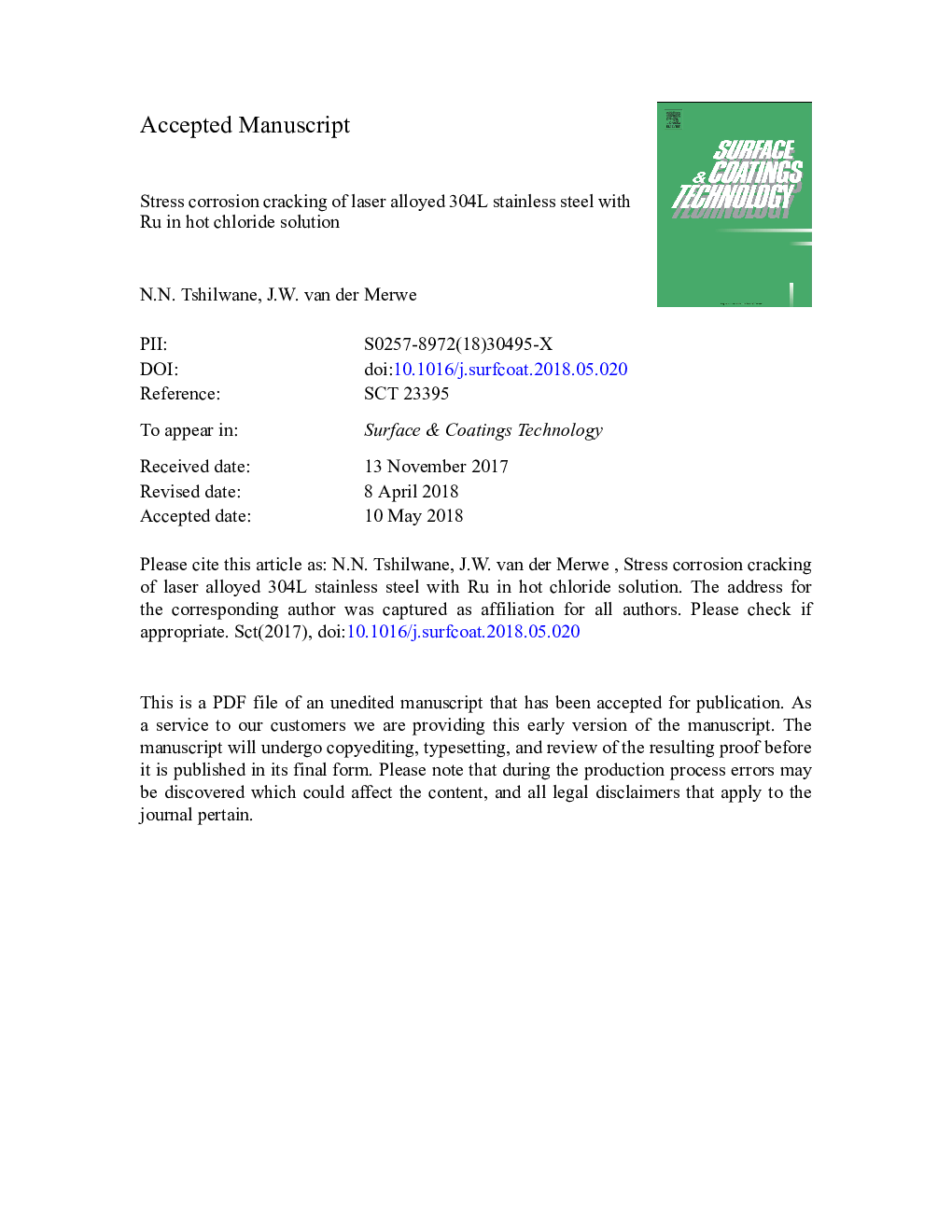| Article ID | Journal | Published Year | Pages | File Type |
|---|---|---|---|---|
| 8023648 | Surface and Coatings Technology | 2018 | 21 Pages |
Abstract
The exceptional ductility and good uniform corrosion resistance of austenitic stainless steels especially the commonly used 304L stainless steel is lost with its severe embrittling in aqueous conditions in the presence of chlorides at elevated temperatures. With the addition of ruthenium (Ru) the corrosion resistance of 304L stainless steel is enhanced, as well as the resistance to stress corrosion cracking. However, the cost of Ru is high and this limits the possibilities. Therefore, to lower the cost of Ru, a layer of approximately 950â¯Â±â¯90â¯Î¼m was laser cladded on the surface of 304L stainless steel. The purpose of this investigation is to evaluate the effectiveness of Ru additions to surface layer through laser cladding to mitigate cracking. Ru was applied to the surface of 304L stainless steel with a Nd:YAG laser as a metal powder with Ru concentrations of 1, 2, 5 and 10â¯wt%. With these methods, the cost of Ru is kept low while it can still cause inhibition of cracking. Three-point bend stressed samples were exposed to distilled water with 100â¯ppm sodium chloride at 200â¯Â°C with an initial dissolved oxygen concentration of 8â¯ppm at 25â¯Â°C. As expected the as-received 304L stainless steel was susceptible to stress corrosion cracking. With the addition of Ru to 304L stainless steel, the resistance to cracking improved markedly, the minimum and maximum crack propagation rate attained was 0.013 and 0.023â¯Î¼m/s respectively. The crack propagation rate decreased as the Ru content was increased, and cracking was inhibited at 5 and 10â¯wt% Ru.
Related Topics
Physical Sciences and Engineering
Materials Science
Nanotechnology
Authors
N.N. Tshilwane, J.W. van der Merwe,
